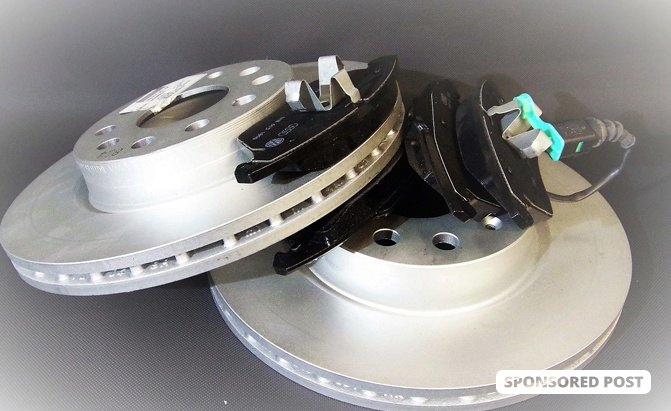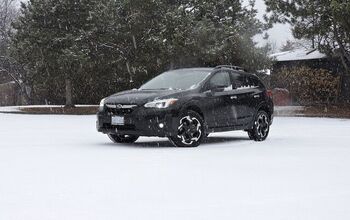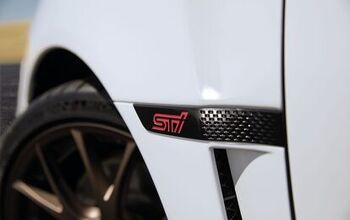5 Brake Warning Signs You Shouldn't Ignore
In this in-depth article, we’ll look at some telltale brake warning signs that shouldn’t be ignored.
If the braking system in your vehicle is healthy and functioning properly, it should be virtually invisible — providing adequate stopping power when requested with no fuss, no unwanted noises, no strange sensations, and no warning lights illuminated in the vehicle’s instrument cluster or dash.
Thing is, since your vehicle’s braking system is arguably the most important safety feature, it’s designed to give one of several warning signs if there’s a problem. Each warning sign is different, and may be the result of one or more issue that’s affecting the vehicle’s ability to stop quickly and safely.
Below, we’ll look at some telltale warning brake warning signs that shouldn’t be ignored.
1. Soft Pedal
If your brake pedal doesn’t feel as firm and precise as you expect, or if you need to press it harder or deeper towards the floor than usual to stop, your brake system is performing sub-optimally. Often times, a soft brake pedal is an indicator that the brake pads and rotors are worn down and in need of replacement. In other cases, a soft brake pedal may also be caused by a problem in the hydraulic part of the system, possibly relating to a fluid leak or brake fluid that’s been contaminated by air or water. In any case, a soft brake pedal is a key warning sign that your vehicle’s brakes need immediate assessment by a professional technician. In extreme cases, a soft brake pedal may require being pressed all the way to the floor to stop. This is dangerous, and should be taken as a sign to stop driving immediately, until the braking system is assessed and repaired.
2. Squealing
Your vehicle’s brake pads generate the all-important the friction required to stop the vehicle upon request, and they wear out a little, every time they’re used. It’s a little like a pencil eraser: with each use, thickness is slightly decreased, until there’s insufficient material left for proper functionality. In a braking system, a built-in wear indicator is used to tell drivers when the brake pads are in need of replacement. Simply, a small metal tab is installed to the brake pads, and when those pads wear down sufficiently, the tab is allowed to contact the spinning metal brake rotor just beneath it — resulting in an irritating squealing or squeaking noise that will become fairly constant, and most audible at low to moderate speeds. If you detect this noise, you can continue driving, but you’re best to make arrangements for a brake-job as soon as possible. Note, however, that a squealing or scraping sound from your brakes may not necessarily indicate component wear. In any case, have a technician investigate if you detect any unusual sounds.
3. Warning Light
A single warning light in your vehicle’s instrument cluster can illuminate when a multitude of problems is detected with its braking system. Check your owner’s manual for the location and design of your specific vehicle’s brake system warning light, and instructions on what to do if you see it. Generally, this light is used to invite drivers to have their brakes inspected professionally for maximum safety. It can appear because of more minor problems, like brake pad wear, or more serious ones, like a hydraulic brake fluid leak. If you see the brake warning light, one or more issues has been detected in the vehicle’s braking system. Check your owner’s manual for the scoop and proceed with caution. Note, further, that this warning light represents an immediate concern: act on it as soon as possible, not the next time you happen to be in the shop for an oil change.
4. Metallic Scraping
If you hear a loud scraping sound when applying your brakes, proceed with extreme caution. Though this sound could be caused by some surface rust on the brake rotors which will eventually dissipate, or a lack of lubrication to the brake pad backing plates (which is easy to address), the more common cause of a metallic scraping sound under braking is much more serious. That cause? Extreme neglect of the braking system that’s led to a total wear-down of the brake pads. Brake pads consist of a slab of wearable friction material bonded to a steel plate. When the friction material is totally worn down, that metal plate is allowed to contact the rotors directly, resulting in an uncomfortable ‘metal-on-metal’ sound. If that’s the case, stop driving the vehicle immediately and have it towed to a repair shop. Continued driving will result in braking system damage, and a high risk of an accident.
5. Car Pulls to One Side Under Braking
If your vehicle consistently pulls to the left or right under braking, you’ll need to get it checked professionally, as soon as possible. This fairly common issue has several possible causes, including a sticky or seized brake caliper, a damaged brake pad, a hydraulic leak within the system, worn seals or other components, and more. In any case, a consistent tendency of your vehicle to drift to the left or right under braking needs to be addressed, as your safety is at risk. Your favorite technician should be able to diagnose the problem quickly and effectively. Note that parts of your braking system require periodic maintenance and lubrication to function properly, and failure to adhere to factory-prescribed maintenance can lead to rusted or seized parts that may result in this symptom.
More by AutoGuide.com Staff



































Comments
Join the conversation